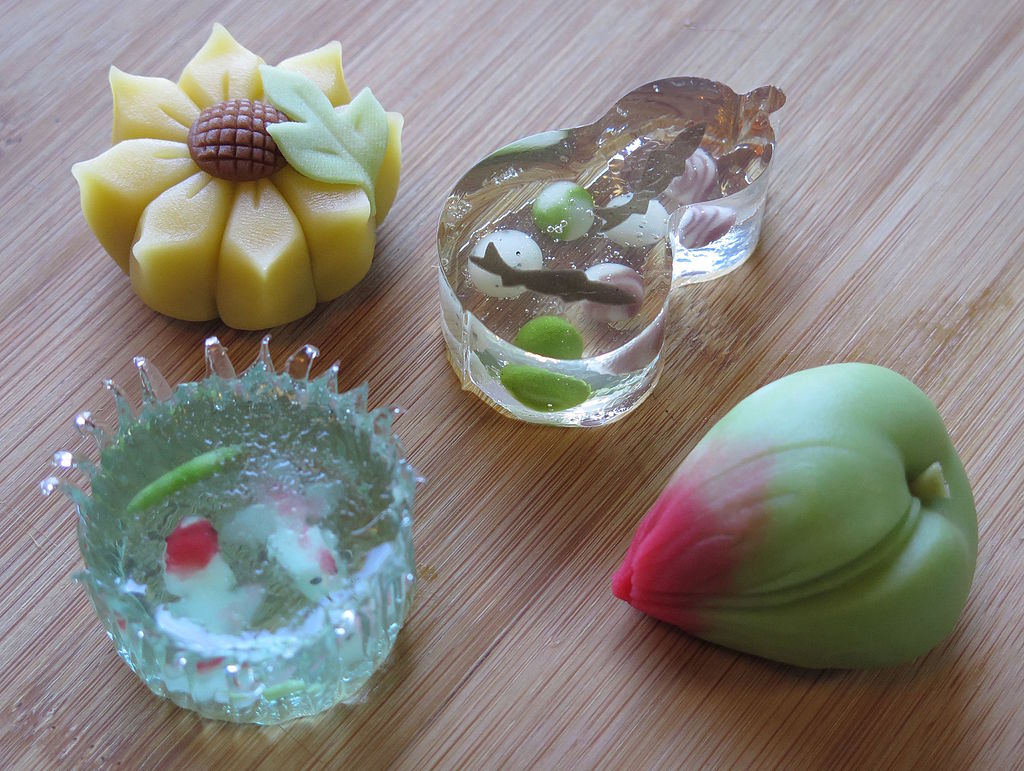Oct 29, 2021
A Year-Round Guide to Great Desserts in Kansai
Got a sweet tooth? Then there is plenty for you to enjoy in Japan. The country is known for many things, including its unique and often brightly-colored desserts and sweets that you can enjoy all year round. The Kansai region has its specialties and twists on popular classics, especially in Kyoto, Osaka, and Kobe. You can find delicacies made from sugar, rice, sweet plant sap, and more. Here is a selection of must-tries for the dessert connoisseur.
Yatsuhashi
This is a popular Kyoto regional specialty (meibutsu) best known as a wagashi – Japanese confectionery typically served with tea. It is also commonly sold as a boxed gift in sweet stores. The dessert has been around since the 17th century and is named after Japanese harp player Kengyo Yatsuhashi – which explains why the pieces are usually cut into harp-like shapes.
Yatsuhashi has an appearance not unlike gyoza or Italian ravioli. They have an outer casing made from mochi rice flour, sugar, cinnamon, and an inner sweet paste filling in different flavors. You can eat them uncooked as a sweet snack or enjoy them baked or steamed with a cup of tea at the end of a meal.
Dango
Dango is another Japanese dessert often served as a wagashi. It is a dumpling made from glutinous rice flour, lightly grilled, and served as three to five balls on a skewer. Dango can be savory or sweet, and some varieties come brightly colored. Two of the most popular in the Kansai region, particularly in Kyoto and Nara, are Mitarashi Dango and Suhama Dango.
These Dango are made with sugar and starch to give them a sweet, soft, and chewy flavor and texture. Mitarashi dango is covered in shoyu (sweet soy sauce). The name is believed to come from their resemblance to water bubbles found in water basins at the entrance to Shinto shrines. Suhama dango is made with sweet soybean flour.
Mikasa
This light dessert snack consists of two small circular pancakes pressed together like a sandwich with a sweet paste filling. The pancakes are made using castella, which is a sponge cake imported to Japan from Portugal. Elsewhere in Japan, mikasa is called dorayaki (dora means gong, which refers to the circular shape). It is typically sold at kiosks as a street food dessert snack, and also sometimes as wagashi.
The traditional Mikasa filling is sweet red bean paste. However, you can now find various flavors, including green tea cream, fruit jam, and chocolate. In Nara, many places serve a larger mikasa of around 30 cm diameter.
Warabimochi
A gelatin-like dessert similar to Turkish delight, warabimochi is made from broken starch or potato starch and dusted with kinako (sweet soybean flour). It is typically cut into bitesize chunks and often sold from trucks and kiosks and served on dessert menus.
Warabimochi is a year-round treat but particularly popular in the summer. It was one of the favorite sweets of Emperor Daigo in the 10th century, which gives you some idea of how long it’s been around. It is named after the warabi wild plant that grows on riverbanks. Enjoyed across Japan, it’s especially popular in the Kansai region.
Dojima roll
The dojima roll is served across Japan but originated at the Mon Cher bakery in Dojima, Osaka, where it is still a specialty. It is similar to the European Swiss roll consisting of a sponge cake wrapped around a thick layer of cream. The bakery also sells rolls with various other fillings, but the original remains the most popular.
Matcha tea parfait
This local twist on a French classic is popular in cafes in Kyoto. It consists of flavored ice cream on a bed of cornflakes, together with whipped cream and fresh fruit served in a parfait glass. Some of the more elaborate concoctions may include cookies or waffles thrown in for good measure. A pleasant treat if you’re feeling decadent!
Douglas Perkins, CC0, via Wikimedia Commons


About the author